Talking Turkey: How Inflation Affects your Holiday
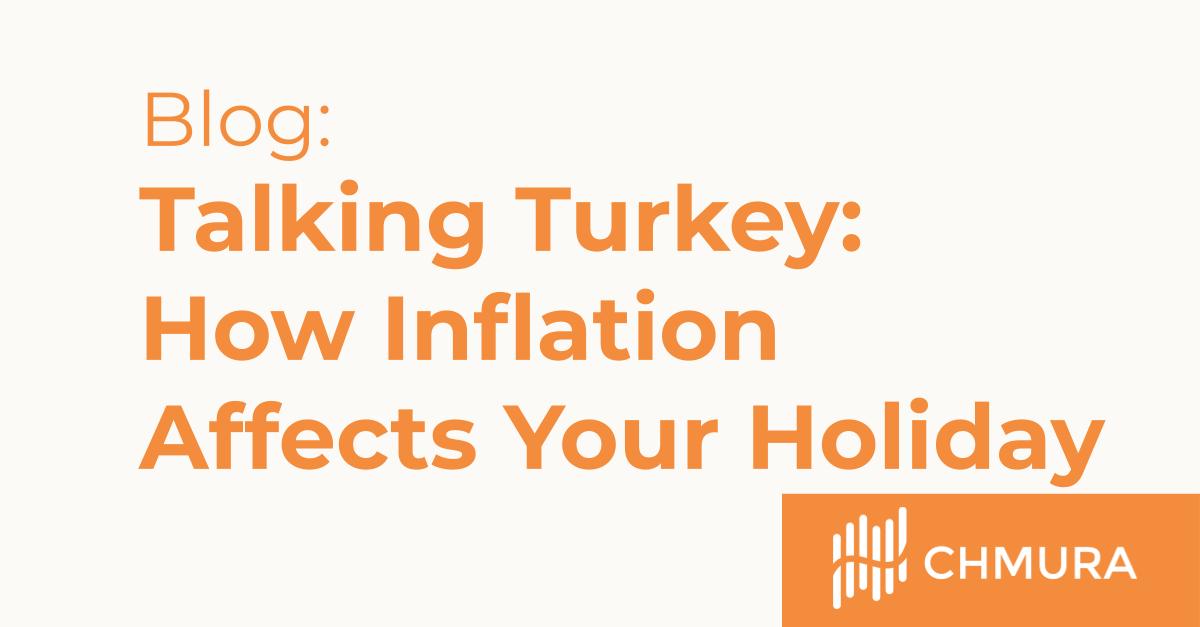
By Former Chmura Staff |
.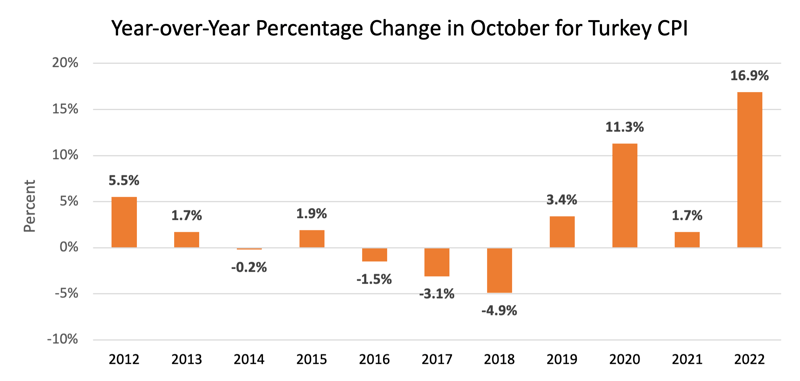
Source: U.S. Bureau of Labor Statistics
Over the year ending October 2022, the overall index increased 7.7%. However, more specific to Thanksgiving and other homecooked meals, the “food at home” index rose 12.4% over the last 12 months. Turkey prices (under the “other uncooked poultry including turkey” index) rose 16.9% between October 2021 and October 2022.
This year’s turkey price index is the highest October increase in the past ten years, and it’s showing in high prices per pound heading into Thanksgiving. The average cost for a turkey in the nation is approaching $2.00 per pound, according to the U.S. Department of Agriculture (USDA).[1] This time last year, the average cost per pound was approximately $1.15. As the nearly 75% increase in price per pound suggests, inflation alone cannot account for skyrocketing turkey prices – a particularly large spike in the avian flu this year has also negatively impacted the turkey supply.[2]
Average Frozen Turkey Prices (Cents per Pound)
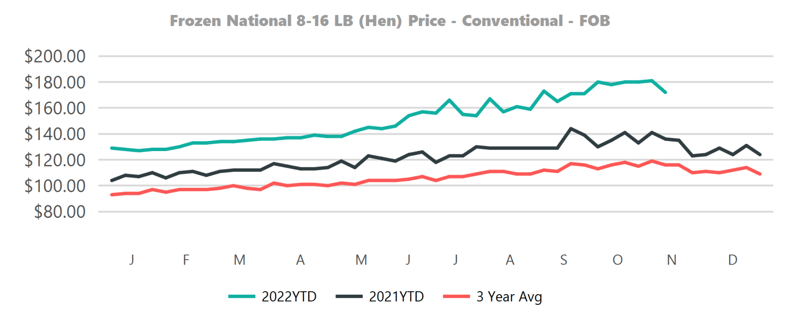 Source: USDA Agricultural Marketing Service
Source: USDA Agricultural Marketing Service
While you probably could have guessed that the price of turkey would be higher this year, what else do we know about the Thanksgiving dinner staple? For starters, your turkey was most likely raised in America – the United States is the world’s largest turkey exporter (primarily to Mexico) and imports a much smaller fraction of turkey sold in the United States from Canada and Chile.[3] Among U.S. states, Minnesota leads the nation in both turkey production establishments (57) and employment (1,211).[4] An estimated 40.5 million turkeys were raised in the state in 2021.[5] Regarding establishments, Indiana (42), Missouri (36), Iowa (28), and West Virginia (27) round out the top five as of the first quarter of 2022. North Carolina (841), Missouri (471), California (436), and Ohio (374) are the next highest employment states after Minnesota.
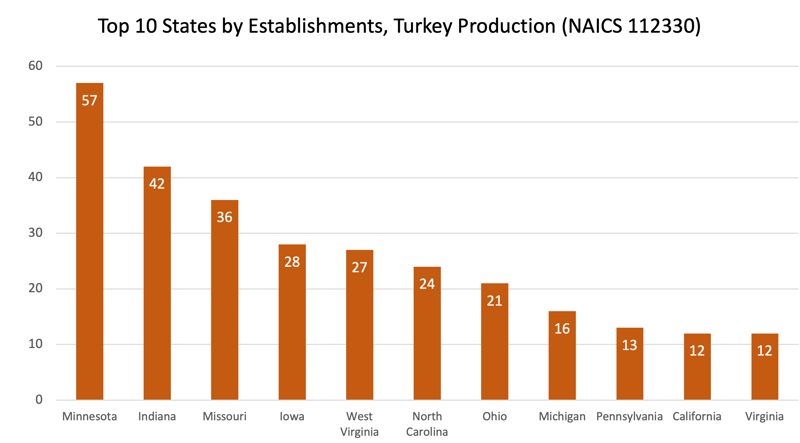 Source: JobsEQ
Source: JobsEQ
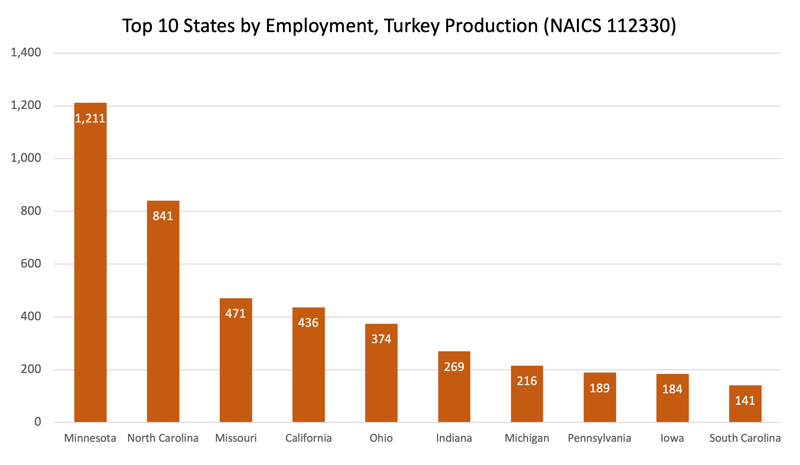 Source: JobsEQ
Source: JobsEQ
The above data was sourced using JobsEQ, Chmura’s technology platform which helps organizations enhance their labor market research. For more information on JobsEQ and how it can help your organization gain insights from labor market data, contact Chmura today.
-----------
[1] https://www.ams.usda.gov/mnreports/ams_3650.pdf.
[2] https://www.washingtonpost.com/us-policy/2022/10/26/avian-flu-turkey-prices-holidays/
[3] https://www.ers.usda.gov/data-products/livestock-and-meat-international-trade-data/
[4] NAICS 112330, Turkey Production
Subscribe to the Weekly Economic Update
Subscribe to the Weekly Economic Update and get news delivered straight to your inbox.











